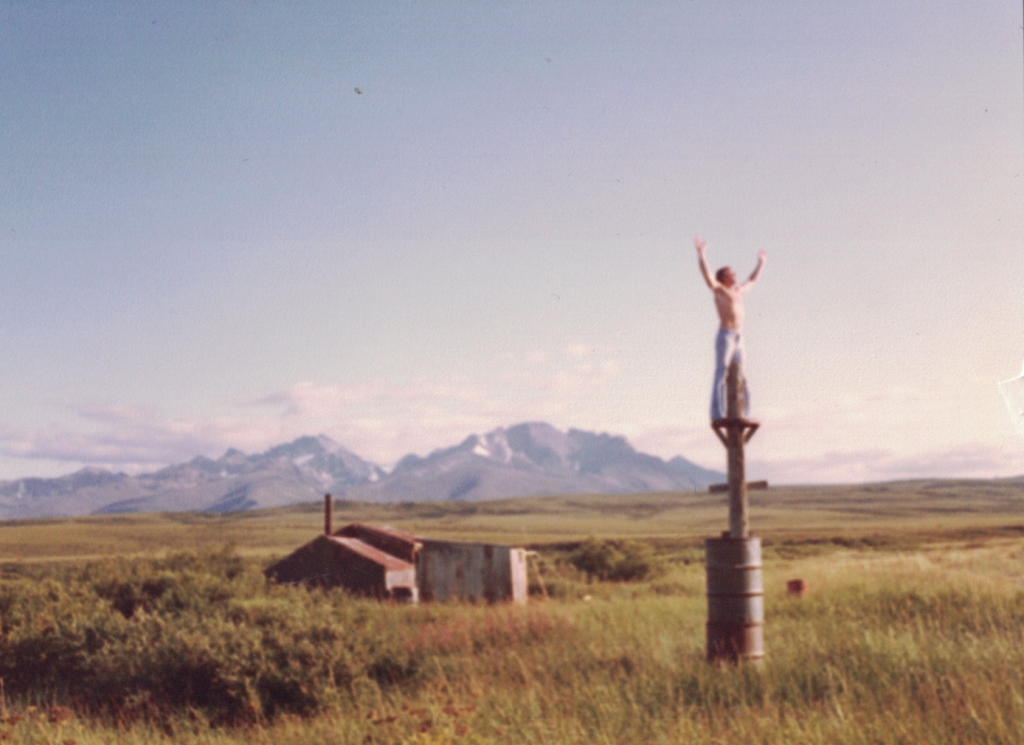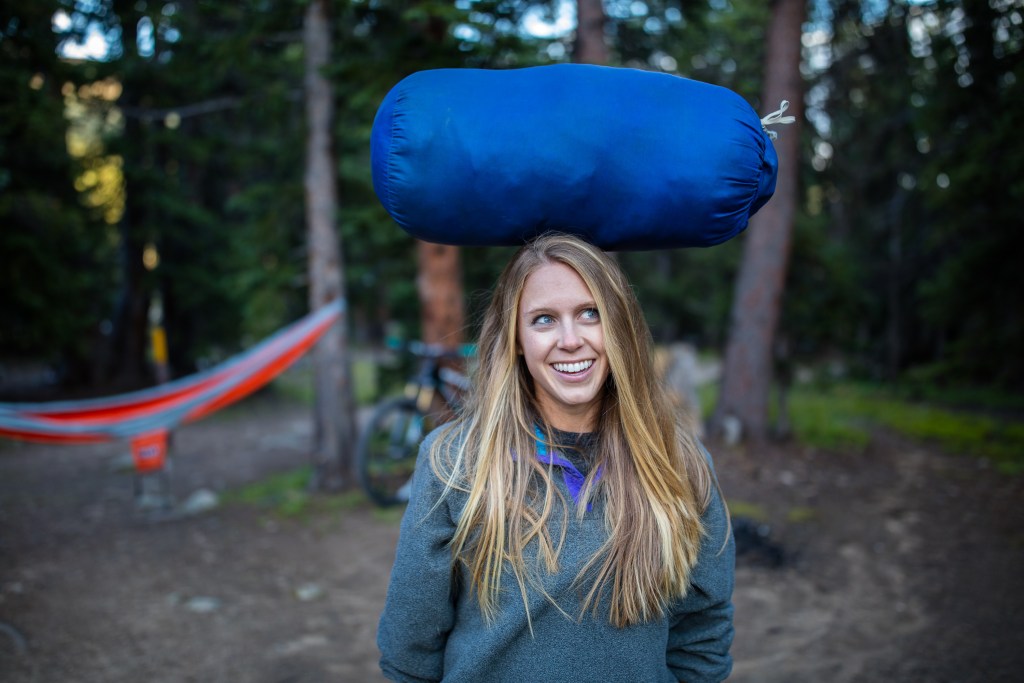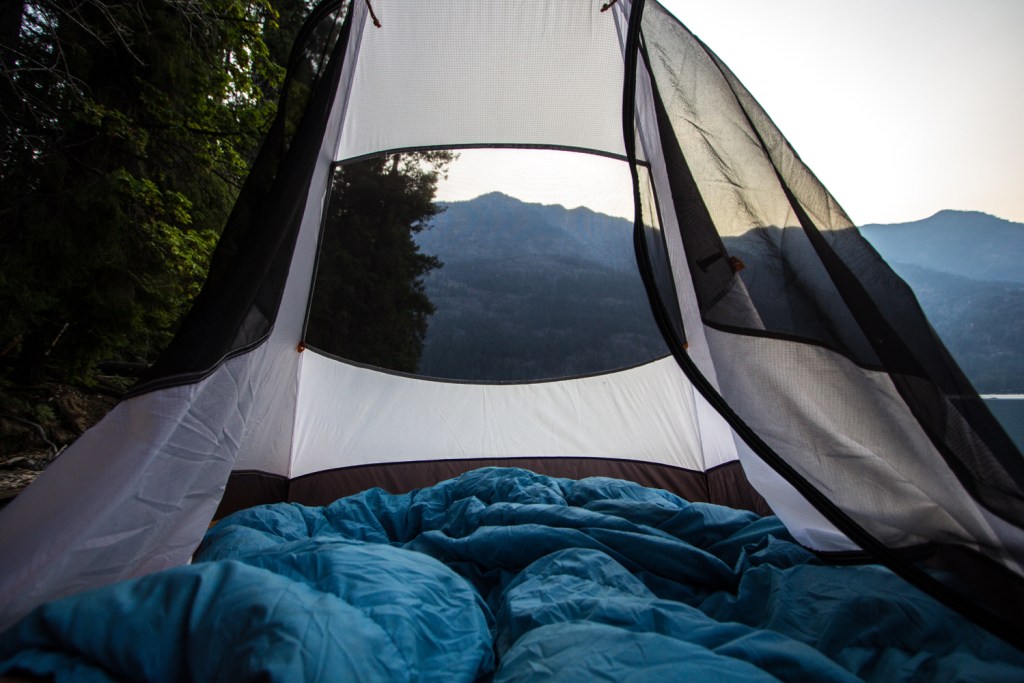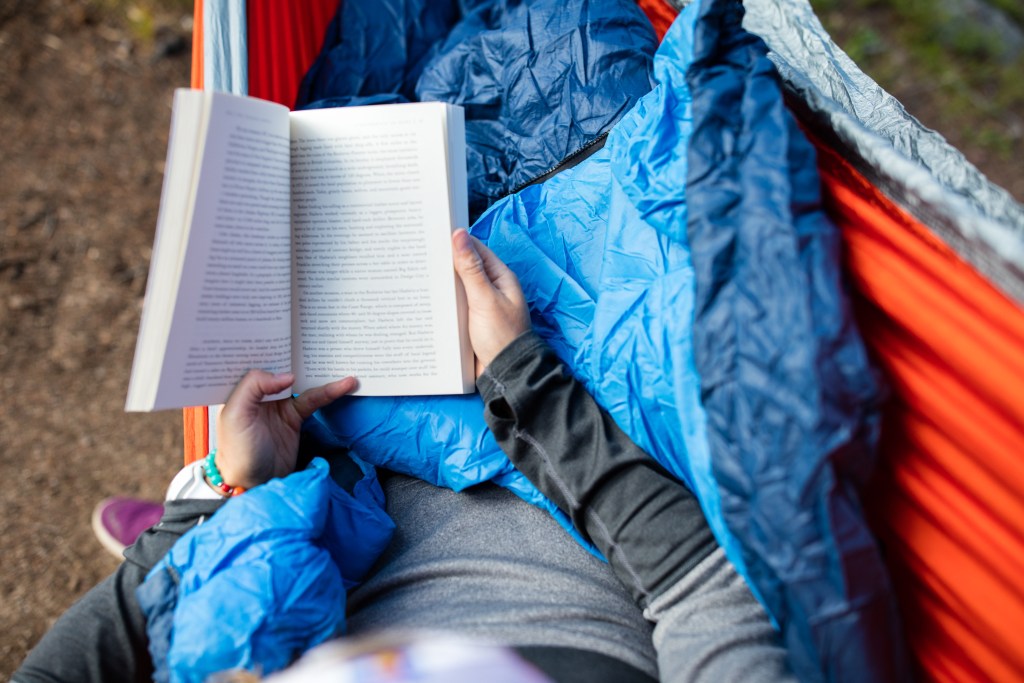Fifty years ago, my dad walked into REI’s first official store in Seattle’s Capitol Hill neighborhood. He was looking for a sleeping bag—one he would eventually take on countless sailing trips through the San Juan Islands, throw in the back of a seaplane en route to Alaska’s remote Togiak River and haul in his pack while hiking the Kalalau Valley along the coast of Kauai. I like to imagine him picking it out from a rainbow of options hanging on the wall. He probably liked the color—a deep blue the hue of Lake Washington on a cloudy day. He would have given it a good squeeze, testing to make sure the down feathers rebounded instantly. Maybe he even crawled inside to make sure it fit his lean 6’2” frame. If he looked closely, he would have seen an old school logo that spelled out “Recreational Equipment, Inc.” right beneath the outline of a mountain range.

Whitney’s dad on a trip in the Alaskan backcountry 40 years ago, with his REI sleeping bag tucked into the cabin in the background. (Photo Courtesy: Whitney James)
At the time, I’m sure my dad, an REI member, imagined the adventures he would have with his new piece of gear, but he probably had no idea that one day his daughter would continue the tradition. Even though it was nearly twice as heavy as the modern sleeping bags brands were beginning to introduce (and was without water-resistant down, a thermal hood or any other tech-forward details these new bags featured), it remained our favorite. As soon as I was old enough to carry my own pack, he began to lend me the bag. Over the years, it grew into my companion that now shares some of my fondest memories of my time spent growing up outdoors.

Whitney with her beloved blue sleeping bag. (Photo Credit: Bryan Rowe)
My earliest recollection is from the summer of 1999, when we went backpacking on the Olympic Peninsula. I was 10, and it was my first time camping outside of a drive-up site. I played on the beach for two days straight and crashed hard each night. I was so blissfully exhausted that all I remember is snuggling into the lofty down until the top of the bag came up to my eyebrows. I didn’t move a muscle all night.
When I was 12, I brought it with me to my first camp away from home in the rolling hills of Eastern Washington. Empowered by a week spent riding a horse named Buck, I wrestled the bag into its original stuff sack on the last morning all by myself. I felt like a superhero. Grinning ear to ear, I made sure my bunkmates had the chance to admire my work before offering to stuff theirs.

Camping last summer with the bag at the top of Lake Chelan in the North Cascades. (Photo Credit: Whitney James)
By the time I fully inherited the bag, it had seen better days. The zipper stuttered. The long shoe lace-like strings that were meant to tie the bag around itself always got in the way in the middle of the night. The bag developed a considerable funk, which in retrospect was probably my fault. But I loved the thing for the memories we shared and the way it reminded me of my dad. So when I moved from Washington to Colorado a decade and a half later, I snuck it out of Dad’s gear shelf in the garage and tossed it into the bed of my pickup. That summer, I worked at a ranch in the Rocky Mountains, and I slept in it every night. People asked why I didn’t use the sheets provided like a normal adult. I shrugged off their judgement and continued to sleep like a baby each and every night.
A couple of years later, I started to wonder why I was always desperately cold camping in the high country in the fall; even on some summer nights I shivered. When I finally asked my dad, he burst out laughing. The sleeping bag I had cherished over the years, he told me, was the least expensive option available at the time. Just something he got for a trip with a few friends in the Cascades. Nothing special, just a blue down sack not even rated for 20 degrees. All those times I defended the sleeping bag suddenly came to mind, along with a touch of sheepish embarrassment. It turns out my camping companions with all of their superior technical gear had been right to call my bag a dated relic of the past.
Eventually, I grew out of the bag and purchased one that would keep me warm all night in my new home state. But whenever I can, and especially on camping trips with my dad, I opt for the Recreational Equipment, Inc. bag from 1967. There are still more memories to be made. After all, it’s a family tradition. And it only stinks a little.

Photo Credit: Bryan Rowe
